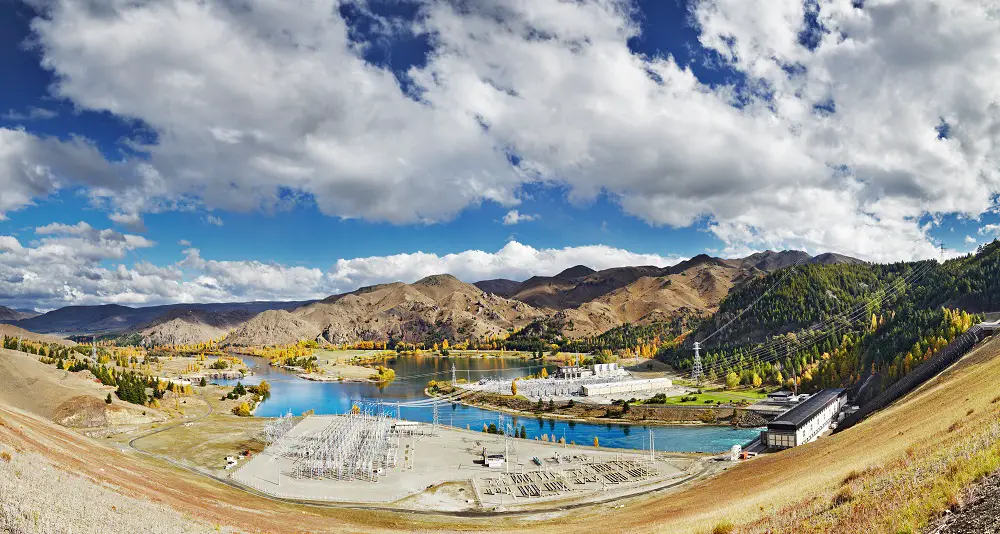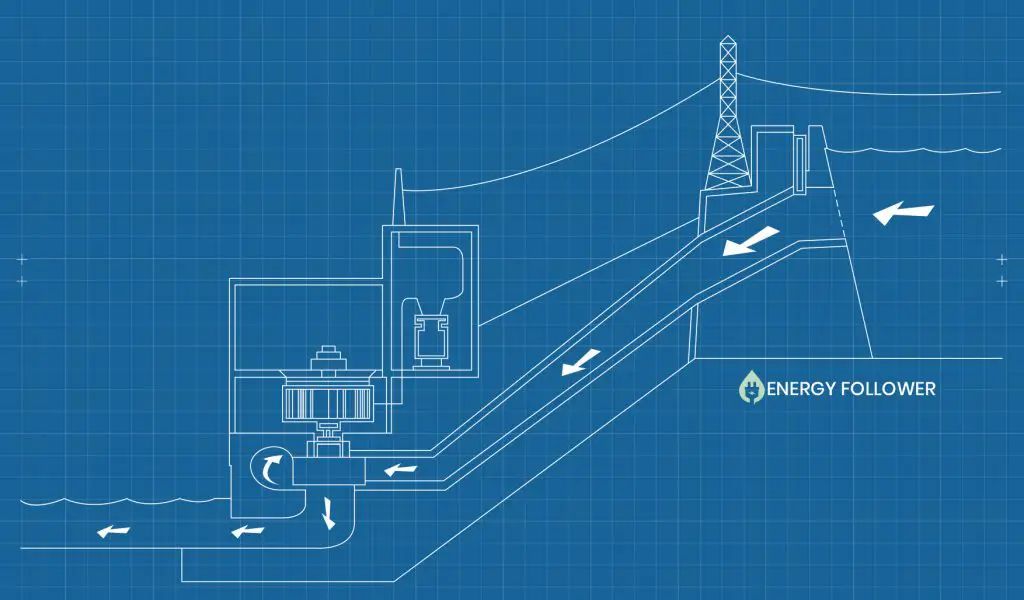Electricity generated from water is the most widely used renewable energy source in the world. The global hydroelectric installed capacity exceeds 1,295GW.
This is more than 18% of the world’s total installed power generation capacity and more than 54% of the global renewable power generation capacity.
Hydroelectric use in the USA doesn’t follow these trends. There are more than 2,000 power plants that account for 6.4% of its total electrical production output. However, in 2019, for the first time in over a decade, wind power surpassed hydropower in output capacity.
Hydroelectricity still accounts for 25% of all renewable energy used in America.
The Pros of Hydroelectric Power
Using water power to generate electricity has many advantages:
It is a Renewable Energy
There is an inexhaustible supply of water. Fossil fuels such as coal, oil, and natural gas, even uranium, will eventually run out.
Water is constantly being replenished by rainfall.
It is Clean
It doesn’t burn like fossil fuels and therefore, creates no emissions. Hydropower releases zero pollutants such as soot or sulfur dioxide.
Water power produces no carbon dioxide, the greenhouse gas. CO2 from power generation is considered to be a major player in climate change.
It is Safer
Nuclear power is obviously dangerous, the by-products of which cause major disposal problems. Hydroelectric power poses no such problems.
It is Cheap
Operating expenses are negligible, water is in constant free supply, in comparison with fuels that have to be extracted from the ground.
It is Cyclical
The heat from the sun, evaporates water from the ground that has fallen as rain. Water vapor condenses in the atmosphere until the droplets of water are heavy enough to fall.
The cycle is constant, ensuring reservoir levels are topped up naturally.
It is Flexible
Controlling the output of electricity is simple by adjusting the flow of water.
When power consumption is low, the flow is reduced. This conserves reservoir levels for the peak period of high consumption or drought.
It is Reliable
Hydroelectricity supplies a constant energy source with few fluctuations.
The Cons of Hydroelectric Power

Using hydropower to generate electricity also has many disadvantages:
It Has Environmental Consequences
Water power might seem like an environmentally friendly energy. This isn’t necessarily true, as significant electricity production requires a large-scale dam, and power station to be built on rivers and lakes. This often results in flooding to the adjacent land.
Property and land that is waterlogged comes at a high cost to the the land owners, both emotionally and financially.
Distress to Wildlife
When the natural flow of water is interrupted, the effect on ecosystems, wildlife, and habitats can be enormous.
Slowing the movement of water naturally raises the temperature. Sadly, this is detrimental to fish, resulting in the death of many.
Dams also obstruct the migration patterns of some fish.
Disruption to Nature
The most appropriate places to build dams and power stations are in areas of outstanding beauty. Huge amounts of construction work are undertaken, not just in erecting the dam, but also in the installation of a substation and pylons to transport the electricity.
There also needs to be a busy road network in place.
All of this construction work often results in the loss of value of surrounding land and properties.
It Might Not Be as Emission-Free as Once Thought
As vegetation decays, it releases carbon dioxide. Flooding and water-logging rapidly increases the rate at which rotting occurs, possibly resulting in the harmful gas entering the atmosphere near/to HEP sites.
Expensive Construction
The building of any type of power plant is expensive, including a hydroelectric plant.
This is somewhat offset by zero fuel expenses, less employees, and low maintenance costs.
Droughts
Hydroelectricity generation and energy prices are directly linked to water availability. Prolonged droughts could have potentially catastrophic effects on production capacity.
How is Energy Harvested from Moving Water?
Hydroelectric power is created in a power plant. One of the largest examples is the Hoover Dam.
Instead of relying on kinetic energy alone – the energy a particle has by reason of its motion – the plant relies upon the force of the water to drive a turbine. The turbine powers a generator which then converts the harnessed energy into electricity.
The electricity produced powers the plant and the excess is transported to other areas.
How a Dam Works to Produce Electricity

A dam is a man-made barrier that restricts or stops the flow of water to create a reservoir. Hydropower is used in conjunction with dams to generate electricity.
Initially, a large dam is constructed across a lake at a very high elevation to form a reservoir.
A generator is situated at a lower elevation, and the controlled downhill flow of water powers a turbine, and in turn, the generator. The generator converts all of the energy into electricity.
When more electricity is required, the water flow can be manually increased to meet demand. Similarly, when demand decreases, the water flow can be reduced. This method is exceptionally efficient and prevents the overproduction of power.
In an ideal climate, there is always enough rainfall to replenish the stock of water in the reservoir. When summer has been particularly dry, there is always a bank of excess electricity to power a pump and carry the water back uphill.

